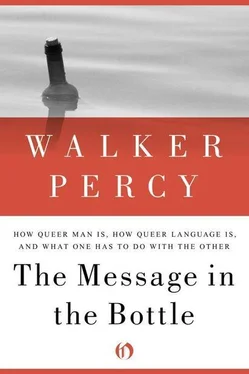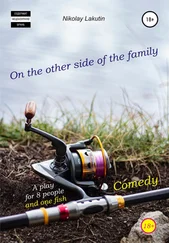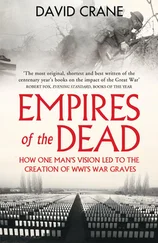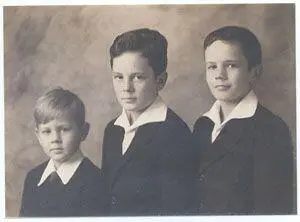
Walker (right) with his brothers, LeRoy (middle) and Phinizy (left), during their years in Birmingham.
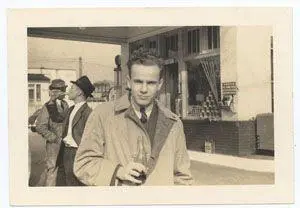
Percy as a pre-med student at UNC–Chapel Hill, “on the way to Charlotte at the beginning of the holidays.” When asked why he chose to study medicine Percy said, “Everybody in my family had been lawyers, it was a tradition in my family to be going into law. And I knew damn well I didn’t want to do that.”
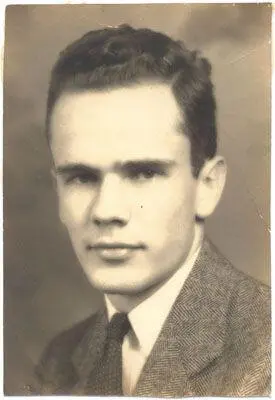
A picture of Percy taken in New York while he was a medical student at Columbia University. During his internship at Bellevue Hospital, Percy contracted tuberculosis and was prescribed a “rest cure.” He spent the next few years reading literature seriously and eventually began working on a manuscript titled The Charterhouse , which he later destroyed.

Walker (middle) with brother LeRoy (left) and lifelong friend Shelby Foote (right) outside the home of Walker and LeRoy’s cousin, William Alexander Percy, in Greenville, Mississippi. Called “Uncle Will,” William Alexander Percy, an accomplished poet and memoirist, raised Walker and his siblings after their mother’s death. Walker described going to live with his cousin as “the most important thing that ever happened to me as far as my writing is concerned. I never would have been a writer without his influence.”
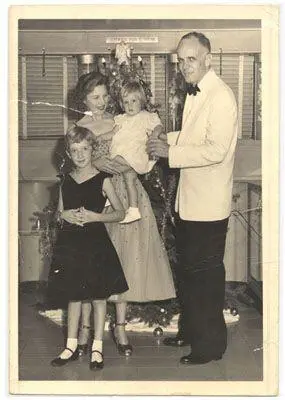
Percy celebrating Christmas with his wife, Mary Bernice, called Bunt, and his two daughters, Ann Boyd and Mary Pratt, in 1956. Although he had yet to produce a publishable novel, that year he had cause to celebrate when one of his first philosophical articles, “The Man on the Train,” appeared in the fall issue of Partisan Review, an esteemed literary journal.
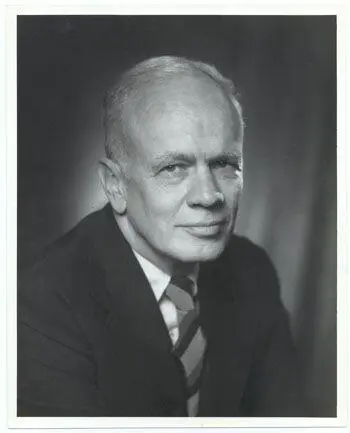
A publicity photo of Percy taken at Pach Brothers, a famous New York City portrait studio, in 1972 for the release of Love in the Ruins. In Percy’s view the novel dealt with “the decline and fall of the U.S., the country rent almost hopelessly between the rural knotheaded right and the godless alienated left, worse than the Civil War.”
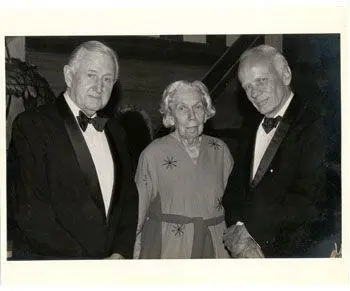
Percy with fellow Southern authors C. Vann Woodward (left) and Eudora Welty (middle) on May 17, 1983, at the ceremony for the Fifth Frank Doubleday Lecture in the Flag Hall of the National Museum of American History in Washington, D.C. Percy greatly admired Welty’s work and referred to her as “the best we’ve got now” when asked about the modern Southern literary tradition.
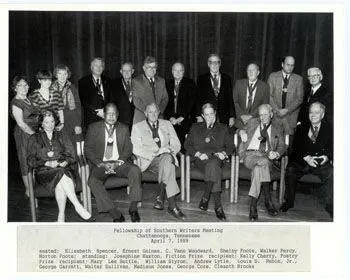
Percy seated on the right between Shelby Foote and Horton Foote (no relation) with fellow members of the Fellowship of Southern Writers, including Elizabeth Spencer and Ernest Gaines, at a ceremony honoring William Styron (back row fourth from left) in 1989. Percy was one of the organization’s charter members. (Photo by Fielding S. Freed.)
Anderson, James F. The Bond of Being. St. Louis: Herder, 1954.
Bernard, L. L. “Social Psychology.” In Encyclopedia of the Social Sciences. New York: Macmillan, 1934.
Bidney, David. Theoretical Anthropology. New York: Schocken, 1967.
Binswanger, Ludwig. “The Existential Analysis School of Thought.” In Existence, edited by Rollo May, Ernest Angel, and Henri F. Ellenberger. New York: Basic Books, 1958.
Bloomfield, Leonard. “Linguistic Aspects of Science.” In International Encyclopedia of Unified Science. Chicago: University of Chicago Press, 1935.
Boas, Franz. Race, Language and Culture. New York: Free Press, 1966.
Bowlby, John. “Critical Phases in the Development of Social Responses in Man.” New Biology, vol. 14, Baltimore: Penguin Books, 1953.
Braine, Martin. “The Ontogeny of English Phrase Structure.” Language, vol. 39, 1963.
Braithwaite, Richard B. Scientific Explanation. Cambridge: Cambridge University Press, 1953.
Bridgman, P. W. The Nature of Physical Knowledge. New York: Marquette, 1936.
Brown, Roger, and Bellugi, Urdula. “Three Processes in the Child’s Acquisition of Syntax.” In New Directions in the Study of Language, edited by Eric H. Lenneberg. Cambridge, Mass.: MIT Press, 1964.
Brunswik, Egon. “The Conceptual Framework of Psychology.” International Encyclopedia of Unified Science.
Buber, Martin. “Distance and Relation.” William Alanson White Memorial Lectures, 4th series. Psychiatry, vol. 20, 1957.
Carnap, Rudolf. “Formal and Factual Science.” In Readings in the Philosophy of Science. New York: Appleton-Century-Crofts, 1953.
—. Introduction to Semantics. Cambridge, Mass.: Harvard University
Press, 1948.
—. Logical Syntax of Language. New York: Humanities Press, 1964.
Carroll, John B. The Study of Language. Cambridge, Mass.: Harvard University Press, 1955.
—. ed. Language, Thought, and Reality. New York: John Wiley, 1956.
Cassirer, Ernst. Essay on Man. New Haven: Yale University Press, 1944.
—. The Philosophy of Symbolic Forms. New Haven: Yale University
Press, 1955.
—. Substance and Function. New York: Dover, 1953.
Chafe, Wallace L. “Language as Symbolization.” Language, vol. 43, 1967.
Chase, Stuart. The Tyranny of Words. New York: Harcourt Brace.
Cherry, Colin. On Human Communication. New York: John Wiley, 1957.
Chomsky, Noam. Aspects in the Theory of Syntax. Cambridge, Mass.: MIT Press, 1965.
—. Cartesian Linguistics. New York: Harper and Row, 1966.
—. “Current Issues in Linguistic Theory.” The Structure of Language,
edited by Ferry A. Fodor and Jerrold J. Katz. Englewood Cliffs, N.J.: Prentice-Hall, 1964.
—. “Explanatory Models in Linguistics.” Logic, Methodology and Philosophy of Science, edited by E. Nagel, P. Suppes, and A. Tarski. Stanford, Calif.: Stanford University Press, 1962.
—. Language and Mind. New York: Harcourt Brace, 1968.
—. “Review of B. F. Skinner’s Verbal Behavior.” Language, vol. 35,
1959.
Collins, James. The Existentialists. Chicago: Henry Regnery, 1952.
Cornforth, Maurice. “Logical Empiricism.” In Philosophy for the Future. New York: Macmillan, 1949.
Crockett, Campbell. “The Short and Puzzling Life of Logical Positivism.” The Modern Schoolman, vol. 31, January 1954.
Читать дальше
